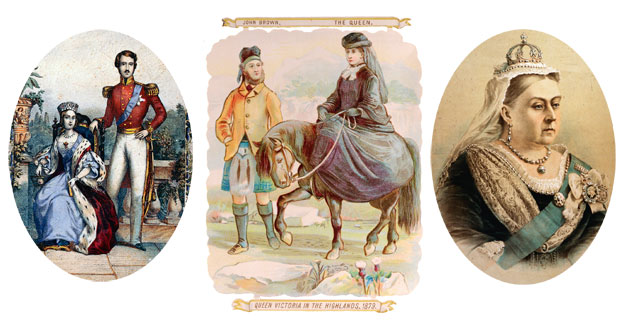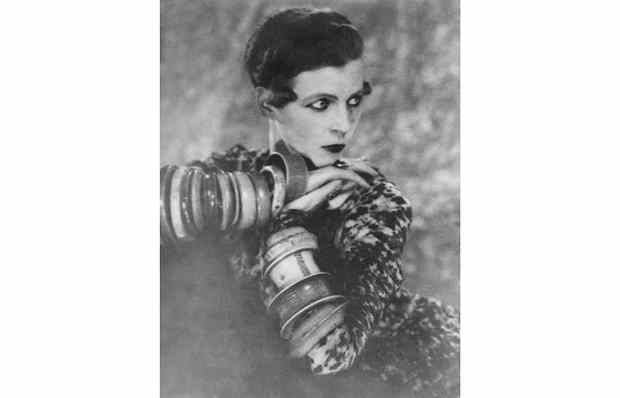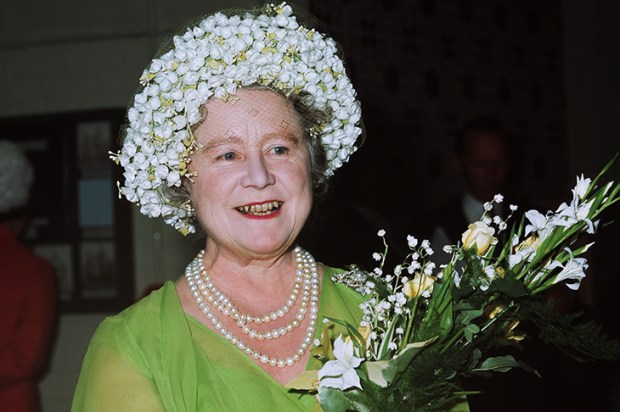Do we really need a thumping new life of Queen Victoria? She seems to be one of our most familiar figures, the subject of countless books; but the surprising fact is that there hasn’t been a full, authoritative study since Elizabeth Longford’s life of 1974. A.N. Wilson has spent many years thinking and reading about Queen Victoria, and this superb revisionist biography is the book that he was born to write.
In Wilson’s view there are two Victorias. The young Victoria was always someone’s pawn, trying to be a person that she wasn’t. She was in thrall first to Lord Melbourne and then to Baron Stockmar and Prince Albert. Only after Albert’s death was she able to become her true, strong-minded self.
Most writers have been drawn to the drama of Victoria’s youth and her love affair with Albert. This is the period of the queen’s life which Wilson finds least interesting. The first third or so is the weakest part of the book. Victoria disappears from view for pages at a time, as Wilson explains the Whigs and Tories or the Crimean war. Important episodes such as the Bedchamber Crisis are rushed over.
His account is revisionist, nonetheless. Victoria was brought up in seclusion by her German mother, the Duchess of Kent, at Kensington Palace, and she remembered her childhood as being lonely and unhappy. Her biographers have repeated this, but Wilson contends that Victoria invented the story in order to justify her harsh treatment of her mother. Whether or not the Duchess maltreated her daughter — and the jury is still out on this — she was certainly a tiresome, rather stupid woman, and once Victoria came to the throne she ditched her. Wilson has seen hundreds of letters written by the Duchess, brimming with maternal love, and on this basis he argues that the Duchess was incapable of cruelty towards her adored child. When Victoria saw these letters after her mother’s death, she was overcome by remorse and had a sort of breakdown.
The biggest surprise is Wilson’s treatment of Prince Albert. Writers on Victoria are sharply divided into fans and haters of the prince, and I had thought that Wilson was a cheerleader. In a very small, buried footnote he claims that he is Albert’s greatest admirer, but one would hardly credit it from the text. In spite of his abundant talents, the prince emerges here as a fussy stickler, a hypochondriac and a humourless pedant. How it was that the engaging, sparkly-eyed young man of Brocky’s drawing of 1841 turned into the heavy, depressed workaholic of only a few years later is a puzzle which still remains to be solved. Wilson considers that Victoria sought to please Albert by playing the little woman and feigning ignorance of politics. The deeper she fell in love with him, the more she regretted surrendering power to him.
Once Albert is dead and safely buried in the magnificent mausoleum which Victoria erected over him at Frogmore, the book really warms up and becomes a gripping read. The 1860s were the darkest decade of Victoria’s life, about which least is known, and Wilson has found plenty of new material. Victoria, who had been infantilised by Albert and by her despised mother, was liberated by their deaths. She grew up. But confronting her demons was a painful process, and she experienced mental illness and depression.
This is where John Brown the Highland gillie comes in. In Wilson’s view — not everyone would agree — Brown was genuinely funny, which Albert most certainly was not, and he released Victoria’s playfulness. With his direct, frank speech, calling her ‘Wumman’, he saved her from becoming too mad after Albert’s death. In answer to the inevitable question — did they or didn’t they? — Wilson diplomatically replies that he can’t make up his mind. But he clearly shows the centrality of Brown to Victoria’s life for 20 years, until his death in 1883, and he gives evidence of Brown’s physical closeness to the Queen. Whether or not the relationship was consummated, it was a sort of marriage.
Victoria was courting danger in her relationship with Brown. In the Gladstone papers, which Wilson has read, there are many strange scrawls from Victoria — incoherent one-liners written in crayon or pencil. (She would have been an incontinent tweeter today.) Victoria’s private secretary General Grey was so concerned that he complained to Gladstone, prime minister at the time, about the Queen’s idleness. Perhaps he feared that she really was mad. But Wilson’s verdict is that the advisers worried that Victoria was spending too much time with Brown, and perhaps drinking too much whisky with him — or claret laced with whisky, which was her favoured tipple. The result was these weird, tipsy messages.
Victoria, as Wilson rightly observes, was one of those people who are good at being old. In her sixties, it is hard not to warm to her. True, she was consistently ghastly towards her children — Wilson makes no attempt to rehabilitate her here — and she was prone to explosions and what he calls ‘operatic’ reactions. She was also greedy about money, hoarding a vast fortune and always hounding Parliament for more — a neediness which was rooted in her days as an insecure pauper princess.
Her daily routines were unchanging and stultifyingly dull. Wilson writes of her ‘diurnal idleness’. Though she complained vigorously about being overworked, her life was a rest cure by comparison with the frenetic schedule endured by our present royals. Wilson claims that because she actually did so little, the biographer is compelled to focus on her, and this makes her a biographer’s delight. It seems to me that she did a hell of a lot more work and wielded more power than any other 19th-century woman I can think of — but still, Wilson does succeed brilliantly in getting close to her.
The queen’s relations with her later prime ministers — the hated Gladstone, the adored Disraeli, and Lord Salisbury, the one she liked best of all — have never been better described. Victoria tore up all the rules of the constitution about being a non-partisan monarch. She was a staunch Tory and she made no attempt to conceal her opinions, treating Gladstone, whom she considered a dangerous madman, with undisguised contempt. But she got away with it, and she was more popular than ever at the end of her life.
Wilson clearly loves and admires his subject, but this is a critical biography — funny, insightful, original and authoritative. At last Victoria has been rescued from her widow’s weeds.
Got something to add? Join the discussion and comment below.
Get 10 issues for just $10
Subscribe to The Spectator Australia today for the next 10 magazine issues, plus full online access, for just $10.
Available from the Spectator Bookshop, £20. Tel: 08430 600033
You might disagree with half of it, but you’ll enjoy reading all of it. Try your first month for free, then just $2 a week for the remainder of your first year.














Comments
Don't miss out
Join the conversation with other Spectator Australia readers. Subscribe to leave a comment.
SUBSCRIBEAlready a subscriber? Log in